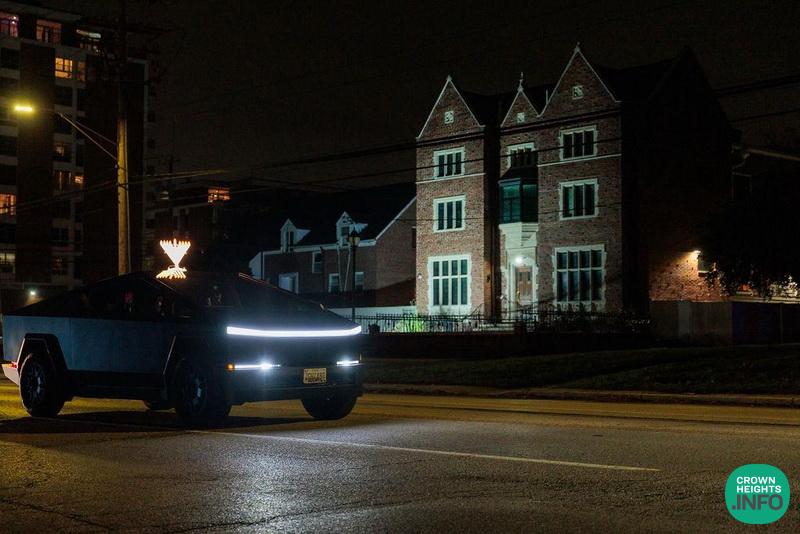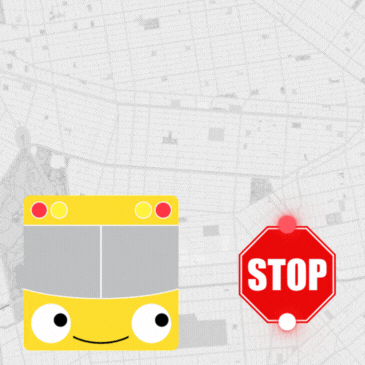
Weekly Dvar Torah: Home, Garments, and Menorah for Hashem
These weeks, we are in the process of erecting the Tabernacle, the Mishkan. Google translates “tabernacle” as a noun meaning “a fixed or movable habitation, typically of light construction.” While this translation may seem accurate in a technical sense, it fails to capture the profound essence of the Mishkan.
Mishkan means “dwelling place.” It is not merely a temporary or portable structure but a home—a place where G-d’s presence is revealed in the physical world. In the wilderness, it was indeed built to be mobile, composed of skins, hides, beams, and an intricate system of interlocking parts that allowed it to be assembled and dismantled 42 times over 38 years. However, its essence was far more than a physical construct; it was a divine dwelling, a space where G-d’s presence could be experienced in an undeniable, tangible way.
Where in the Temple was G-d’s presence most visible? There were numerous miracles that testified to this sacred reality. Consider the Menorah, which Aaron the priest would light every evening. Each of its seven lamps received an equal measure of oil—half a loog—but while six lamps would burn out by morning, the second lamp from the east would miraculously continue burning for a full 24 hours until the next lighting. This was not an accident but a divine sign: a visible reminder that G-d’s presence defies natural limitations.
Another miracle took place in the Holy of Holies, where the Ark of the Covenant was housed. The Ark itself measured two and a half cubits in length, yet when the Holy of Holies was measured, its total span from north to south remained 20 cubits, the same as when measured from wall to Ark on either side. This paradox, where physical measurements defied logic, demonstrated that the Mishkan was not constrained by the usual bounds of space.
Moreover, the Temple could accommodate vast crowds despite its seemingly limited space. During the pilgrimage festivals, when hundreds of thousands, perhaps even millions, of Jews gathered in Jerusalem, they stood shoulder to shoulder in a space so tight that the Mishnah describes it as being unable to fit a needle. Yet, when it came time to bow down in prayer, suddenly, miraculously, each person had enough space to prostrate themselves comfortably and confess privately without being overheard. Such events were not coincidences; they were G-d’s way of revealing His mastery over space and time, showcasing that His presence was embedded within this physical world.
The ultimate purpose of the Mishkan was to make G-d’s presence perceptible to the human eye. It was the macrocosmic representation of divine dwelling. Yet, its significance extends far beyond its physical manifestation. The Torah states, “Make Me a Sanctuary, and I will dwell in them”—not “in it,” but “in them.” This means that the true dwelling place of G-d is within each and every one of us. In times when the physical Temple is absent, the responsibility shifts entirely to the microcosm—the human being. G-d’s presence must reside within us, and it is up to each individual to create that space within themselves. We must open our hearts and invite G-d into our lives, ensuring that His presence is not just theoretical but deeply personal and real.
Another key element in preparing the Mishkan and the service of G-d in the Mishkan, is the garments of the priesthood. Moses was instructed to make special garments for Aaron, the High Priest, and Aaron was commanded to wear these garments while serving in the Temple. The significance of garments extends beyond mere clothing; they represent the ability to channel and contain divine energy.
Garments serve multiple functions. They surround a person, shaping how they are perceived and how they express themselves. They serve as a vessel, containing and directing spiritual energy. Moses, tasked with drawing divine light from the infinite into the finite world, required spiritual garments to make this process bearable for those receiving it. Without them, the influx of divine energy would be overwhelming.
Similarly, Aaron’s role in merging the divine with the physical required specific garments to facilitate this union. The Temple was a place where G-d met the world, and for this merger to take place, garments served as a medium, ensuring that holiness was properly transmitted without being diluted or overpowering.
Every Jew, too, has spiritual garments. Every mitzvah performed creates a garment—one that will serve as a source of reward and light in due time. Each act of kindness, each prayer, each observance of G-d’s commandments weaves a spiritual layer that surrounds and protects the soul. These garments help to channel divine energy, to merge the physical with the holy, and to serve as the conduit for receiving the ultimate reward. This is why the Torah issues separate commandments regarding garments: one for Moses, one for Aaron, and one for the Jewish people—because each has a unique role to play in drawing holiness into the world.
G-d instructed Moses regarding the preparation of pure olive oil for the Menorah: “And you shall command the Children of Israel, and they shall bring you clear, crushed olive oil for illumination, to light the lamp continuously.” But why was the oil brought to Moses, when it was Aaron who kindled the Menorah?
The Menorah was not just a ritual object; it symbolized spreading divine light throughout the world. Moses, the leader of the generation, was the conduit for this spiritual power. He received the oil not for himself but to empower Aaron, and through Aaron, to illuminate the world. This teaches us that spiritual light does not remain confined to the Temple—it must radiate outward, reaching every corner of the earth.
This idea remains relevant today. I have friends—Chabad emissaries—in China, Italy, Israel, Germany, and beyond. They work tirelessly, facing challenges unique to their communities. Yet, their concerns are not about difficulties or obstacles; they are about how to spread more light. With Purim approaching, their primary focus is ensuring that every Jew hears the Megillah and experiences the joy of the holiday, despite logistical challenges. They strategize, innovate, and commit themselves to their mission with unwavering determination.
Their mindset is one of unstoppable optimism. When difficulties arise, they see them not as barriers but as springboards to greater accomplishments. One of these emissaries recently shared a powerful insight: “If one sneeze and one careless move can spread a virus to the entire world, how much more so can a single act of kindness create a ripple effect of goodness and positivity, changing the world a hundred times over!”
These are the modern-day lamplighters. Just as Moses provided the oil for the Menorah, today’s spiritual leaders provide the inspiration and strength for their communities. They do not see devastation as an end; they see it as an opportunity to rise above limitations, to bring more light into a world that desperately needs it.
As we approach Purim, be inspired to increase in acts of goodness and kindness. Let us commit to being beacons of light, spreading joy, warmth, and divine presence wherever we go. And above all, let us remember that the true Mishkan is within us—each of us has the power to make our world a dwelling place for G-d.
Have a Dress-up of a Shabbos,
Gut Shabbos
Rabbi Yosef Katzman












